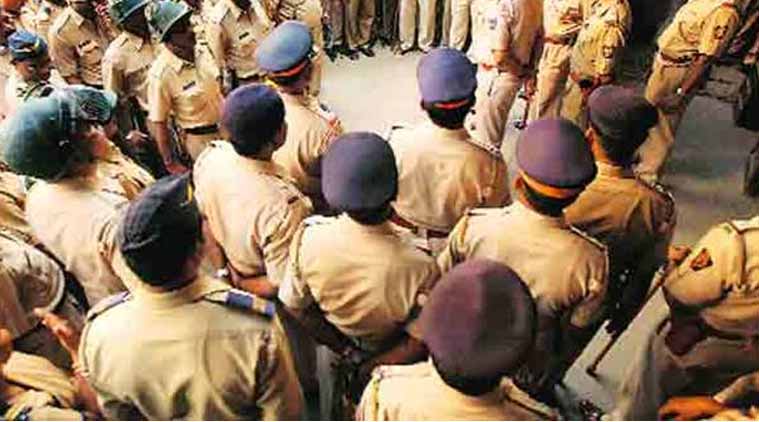People police
India’s police has largely retained a repressive colonial character. It must introduce strategies of community policing

In the 1960s, India and the US faced a similar law and order situation — escalating crime and street violence. The two countries responded differently with different results.
A criminal justice system can hope to succeed in delivering peace and order only in a “majority defenders of law” situation, that is, most of the citizens obey the law voluntarily. And it is the responsibility of the police to facilitate the achievement of this objective.
Robert Peel, the father of modern policing, had this insight when he founded the London Metropolitan Police in 1829. Calling the police “citizens in uniform”, he urged them to work in close collaboration with the community and focus on crime prevention. This remains a go-to strategy as it makes citizens partners in crime prevention and is the best bet for creating a majority-defenders-of-law situation. It is another matter that the British in 1861 built a militaristic and repressive police in India to defend their predatory rule.
In the early 20th century, the head of Los Angeles police batted for Peel’s approach. But as time went on, the police force under the influence of detective novels, developments in the automobile and communication sectors and sub-urbanisation, opted for the “professional crime-fighting model”, which focused on three Rs — random preventive patrols, rapid response to calls for service and reactive criminal investigation. This reduced the role of citizens in crime prevention from collaborators to help-seekers. The increasing motorisation of police patrols isolated the force from the communities. The police interacted with citizens primarily at crime scenes, making the relationship between the two increasingly hostile. Cut off from community, police grew increasingly inflexible.
By the 1960s, as crime and urban riots escalated in the US, researchers questioned this model. A study revealed that crime-fighting activities like arrests constituted less than one-fifth of patrol activities. Most of the time, patrols were resolving conflicts, providing emergency and other public services, and maintaining order. Often, citizens called on the police to perform a variety of functions not specified in the law or in police manuals. Moreover, police officers regularly used their discretion in handling incidents, something that this model professedly abhorred.
Studies of the effectiveness of preventive automobile patrols found that despite guzzling substantial police time, they did limited crime-fighting activity. More than nine-tenths of arrests, for example, resulted from citizens’ calls. Later studies found that preventive patrols by automobile did not effectively reduce crime, increase public satisfaction with police or decrease citizens’ fear of crime. Several studies on the effectiveness of rapid response to calls for service found that it had little impact on crime prevention or arrests.
Such findings in the 1980s, along with the courts’ increasing restrictions on searches and interrogations in deference to people’s rights, led to the gradual displacement of the professional crime-fighting model by a set of strategies and programmes collectively called community policing. It pitched the police as neighbourhood problem-solvers rather than as incident-activated crime-fighters. Police officers assigned to community policing duties were asked to maintain close contact with the community and to solve their problems through foot patrols, community meetings and prompt service at police stations.
In the 1990s, community policing became part of a federal strategy to counter crime in the US. A law enacted in 1994 led to the hiring of 1,00,000 new community police officers and the establishment of the Community Oriented Policing Services office in the Department of Justice. By now, about two-thirds of local police departments employing some nine-tenths of US police officers have a community-policing plan of some type. More than $14.4 billion has been invested in the initiative so far. The result is a fall in violent crimes decade after decade.
India inherited a militaristic and repressive police force from the British. It has, by and large, persisted with the colonial crime-fighting model. Commentators attribute the system’s persistence to a resource crunch, vested interests, an indifferent academia not challenging the efficacy of police practices and the glamourisation of tough cops. Faced with rising crimes, street violence and subversive actions, the central government did initiate the modernisation of the police force scheme in the 1970s. But instead of switching to problem-solving and community policing strategies as the US did, it kept investing in the crime-fighting strategy — motorised patrolling, quick reactions to calls for help and reactive investigation. It ignored the failure elsewhere of the fire-brigade model of reactive policing in curbing crime by itself. It apparently led to an uninterrupted trend of an increase in crime and street violence in India. The ever-increasing fear of crime is reflected in gated communities and the booming private security industry.
There is an urgent need to embrace a hybrid of the community-oriented and crime-fighting policing strategies and to reinforce it with crime-mapping and trend analysis. This will keep the majority on the side of the law as well as deal effectively with career criminals and psychopaths. And it will be an optimum utilisation of scarce resources.
This is the time to reinvent the role of constables, who constitute 86 per cent of the police, and transform them to problem-solvers. Or else, law enforcement agencies will be overwhelmed by rising crime and overrun by escalating street violence. With 356 million people in the 10-24 years age group, a proactive police engaging an interconnected, volatile and youthful population through community policing programmes is perhaps the only hope for enduring peace and lasting order.
The writer is Additional DGP, Haryana, and is special officer for community policing and outreach at the office of the Chief Minister of Haryana





































No hay comentarios:
Publicar un comentario